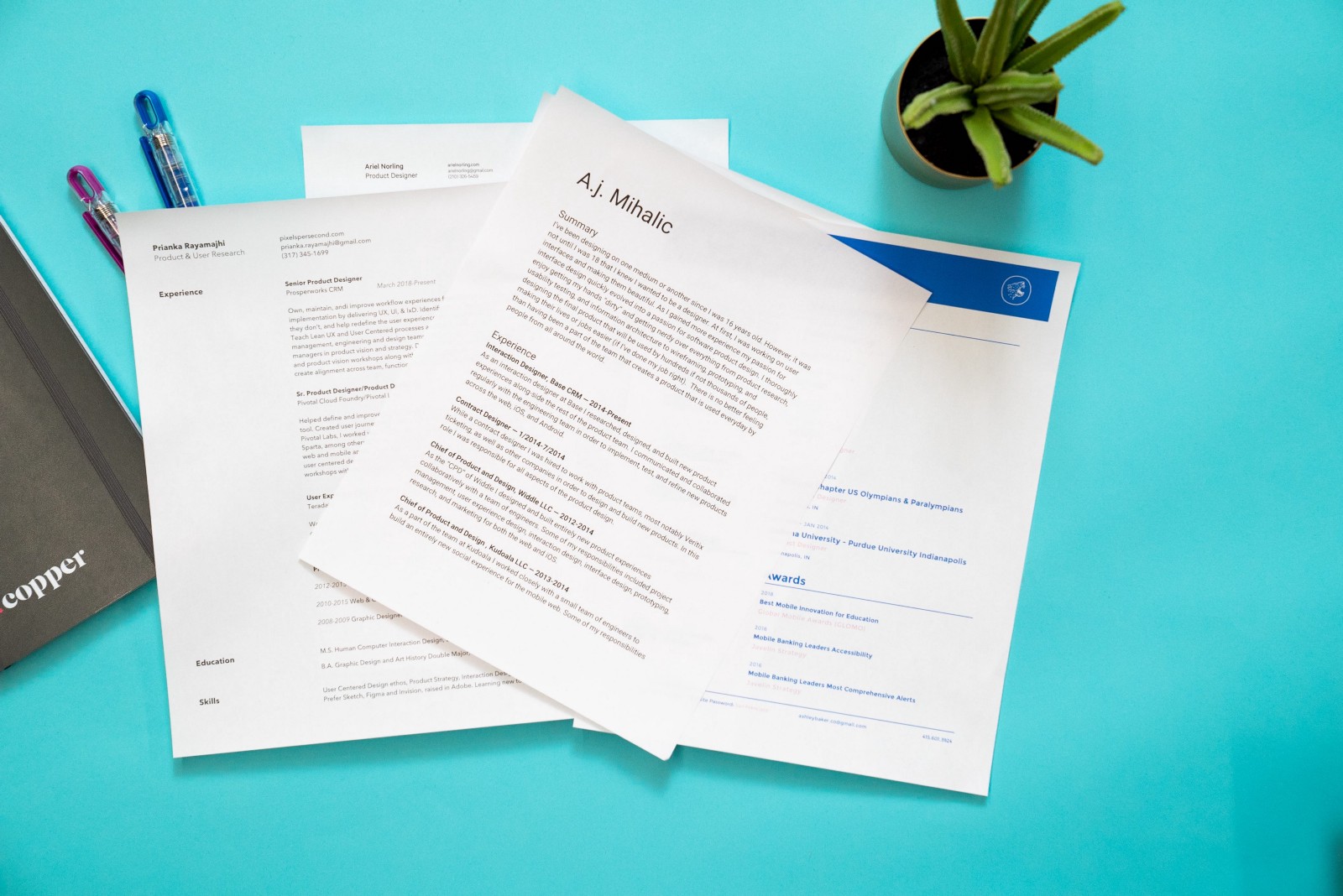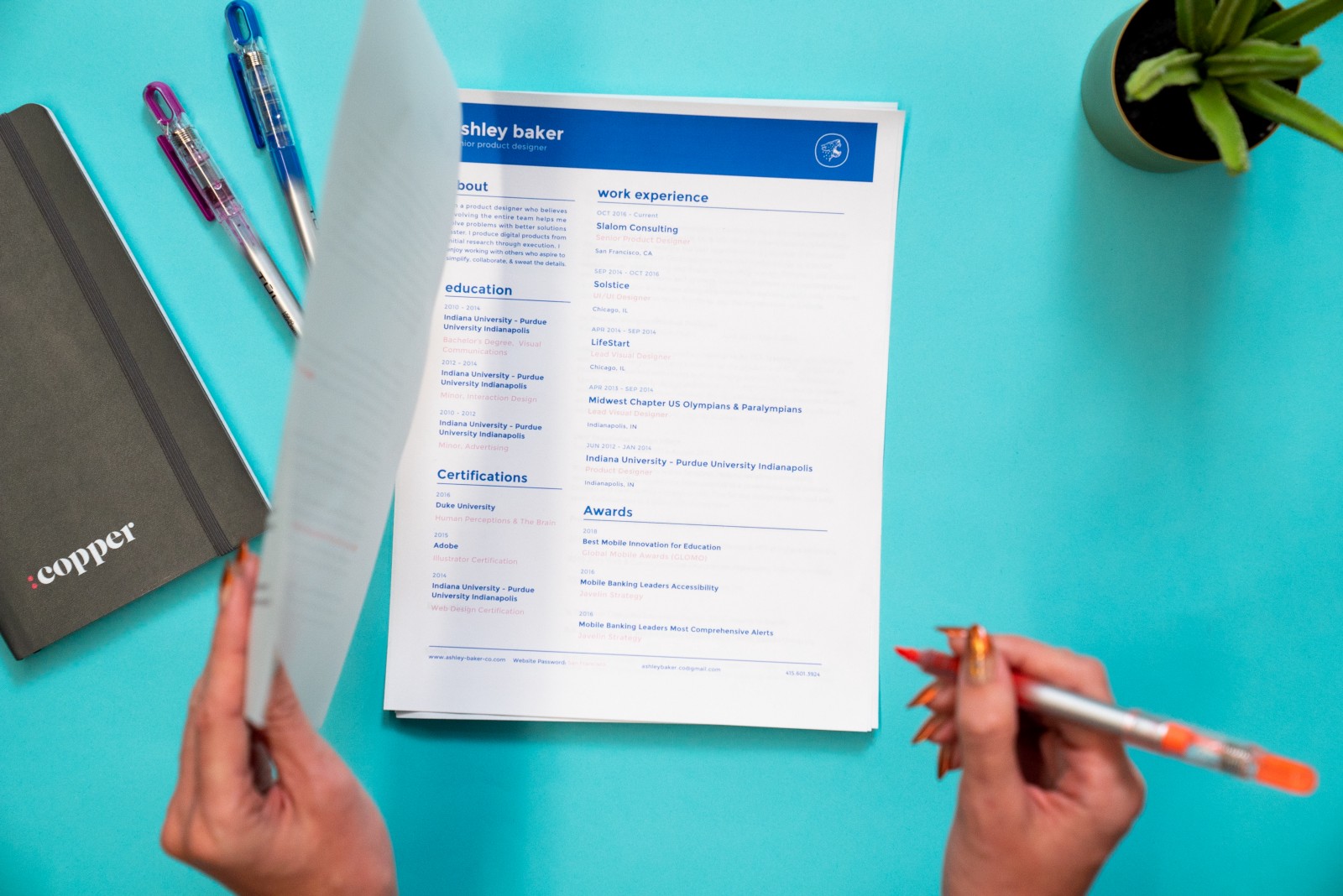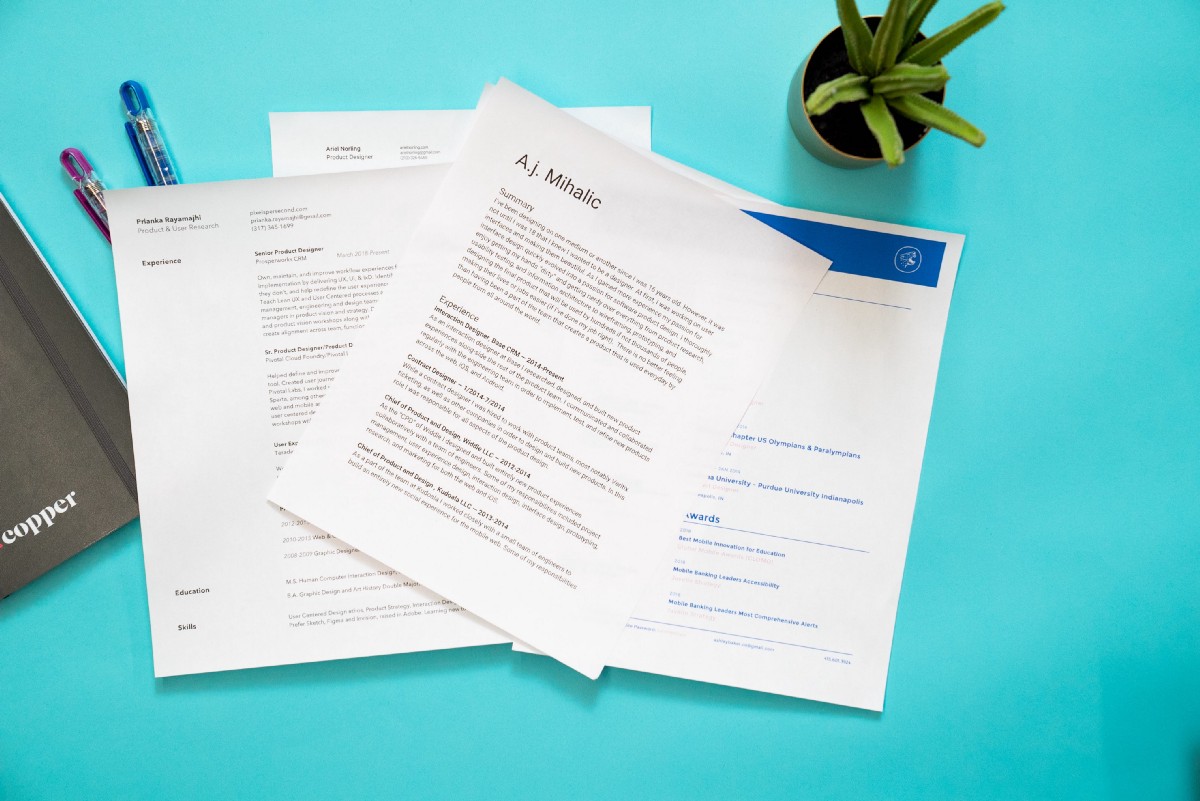This is a 4 part series on the experience and lessons learned growing our ideal design team as a new design manager at Copper.
Why aren’t we getting the right type of candidates in our job pool?

You get headcount and budget, you look for an old job description (there is always an old job description lying around), make some minor edits and send it off. This process will work for some time, but then you get to a point where you see the same types of candidates come into the job pool. Surprise, they aren’t exactly what you’re looking for.
Job descriptions can have significant impact to your design and product teams. It also impacts finance, HR and the applicant themselves. When looking for jobs, applicants don’t have much to go off of other than the job description and what’s publicly available about your org and team.
A few months ago, we listed a job description for a Senior Product Designer at Copper. Based in San Francisco, Copper is the leading customer relationship management platform for G Suite. We received a lot of applications, but no one was making it through the initial screening process. We were seeing a huge problem with our pool of applicants–Many were UI and web design focused or folks earlier in their design career. What was going on? So, we approached the job description like we did any design problem and here is what we found. 🤗
We had the wrong messaging! When we looked at our current job description, it was clear that our previous job description no longer supported our current design team needs:
Our old description no longer matched the skills and experience we now require.
We wanted designers that can lead strategy on the product team, our old description focused on executing on features that were predefined.
We listed way too many tactical skills.
We needed designers that were outcome focused, they could lead discovery research, synthesize, and execute on their validated solutions.
Our job description was strongly masculine coded.
Hiring a diverse team is important to us. We ran the posting through a gender decoder and learned it was leaning towards strongly masculine coded. Research shows women aren’t as likely to apply for jobs that are advertised with masculine-coded language.
Conduct Qualitative Research
We dug into these areas more by working with the design team to understand what kind of designer we were looking for. We did this in a multitude of ways:
Look at old notes from previous hiring rounds
We examined our hiring notes from the past year to understand why a candidate moved or didn’t move forward through the process. What were we looking for at that time? Do we still need those skills or traits in our next candidate?
Talk to your team and key people in your organization
We spoke with our design team and leadership to get insight into our current needs, and where we needed to grow. This helps us to point out specific requirements for the role vs. the nice to haves.
Reach out to your user base and understand their needs.
We surveyed across several design slack communities to better understand the needs of senior designers who are looking for or just starting their new jobs. What do they seek out, what makes them apply?
Look at other job descriptions for similar roles
Lastly, this seems like a no brainer, but it’s probably the most important. We conducted a competitive analysis of a few job descriptions from various companies like Lyft and Intercom, among others. What are they doing well, what do they need to improve on? Run their applications on the gender decoder. How is it coded?

Be more thoughtful in how you convey design and company culture.
While we were saying similar things, we were more prescriptive in the tactical skills needed where Lyft and Intercom focused their language around the impact the applicant will bring through these skills in a holistic way.
While our old description said:
- Create and iterate on interaction flows and prototypes (we primarily use Sketch and some in-browser prototyping)
- Create pixel-perfect design specs that stress visual details and exceptional user experience
Lyft, says the same things in a different way:
- “Influence the shape of the product with research and data while executing design work using high quality wireframes, mockups, user journeys, and cross-platform interactive prototypes.”
Intercom:
- “Work through design problems from beginning to end: translating research insights into ideas that form disruptive new products and features, then designing the workflows and detailed interactions to realize them”
Senior Designers want more autonomy and ownership in their next role.
After speaking with many senior designers about what they sought out in their next role, it came down to ownership.
“I’d say in general, if a description focuses more on tools and methods than teamwork and outcomes, then it feels not great to me.”
“Ownership. I hate micro management.”
“Responsibilities: +1 for ownership / servant leadership”
We were excited to hear that this is what senior designers are looking for in their next role, because this quality is what we are looking for in our designers!
We addressed autonomy and ownership throughout our new job description by making it more personal and tailored to the applicant’s own process.
You’re a self starter who loves to collaborate with PM and Engineering to influence the shape of the product from conception to execution and beyond through a user centered approach.
You’re not afraid to question assumptions in the roadmap, you understand how to advocate for change and create stakeholder alignment through forthright conversations.
You’re curious, you love to look for undiscovered users and opportunities to include in your vision
Be honest. Ground the designer to the reality that your org lives in.
We’re not a perfect company and we don’t expect any designers to be. We are an organization that has an appetite for learning and growing while moving fast. We face challenges like many startups in our stage, and that’s exciting and risky. We need a designer that can own their successes and failures, move quickly to build great product that solves real problems and doesn’t design in a vacuum.
In the end, we wrote a new job description that we are proud of. It speaks to who we are as a company and as designers– and we are getting some awesome applicants. And if you’re wondering, we’re hiring! Read our new and improved job description, and come work with us!
Find me on Twitter. See my work, or write to me at prianka.rayamajhi[@]gmail[.]com
